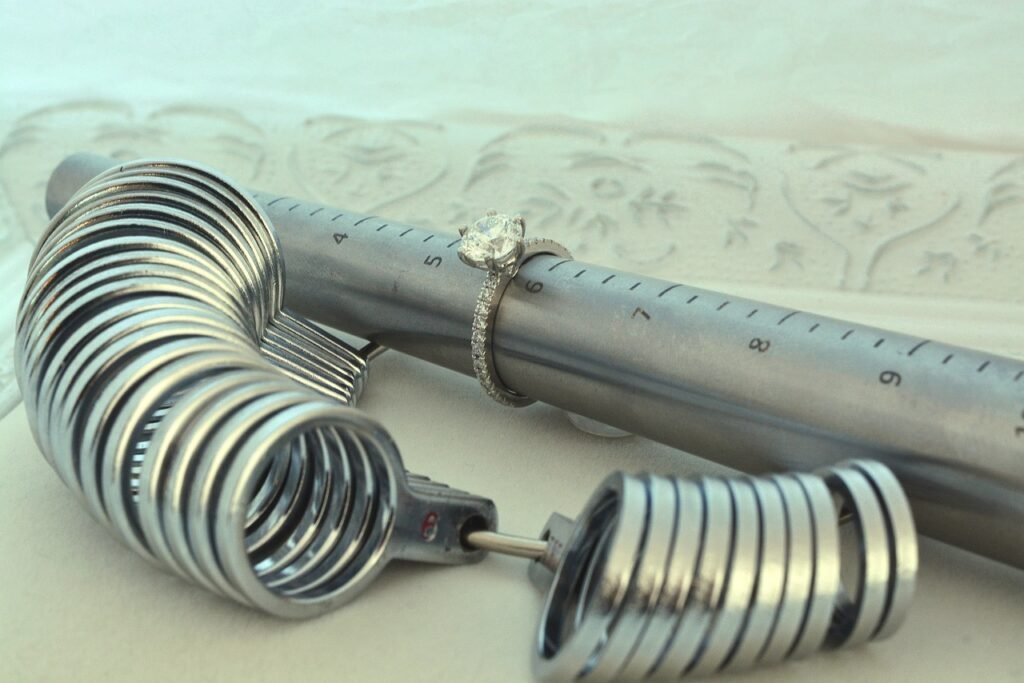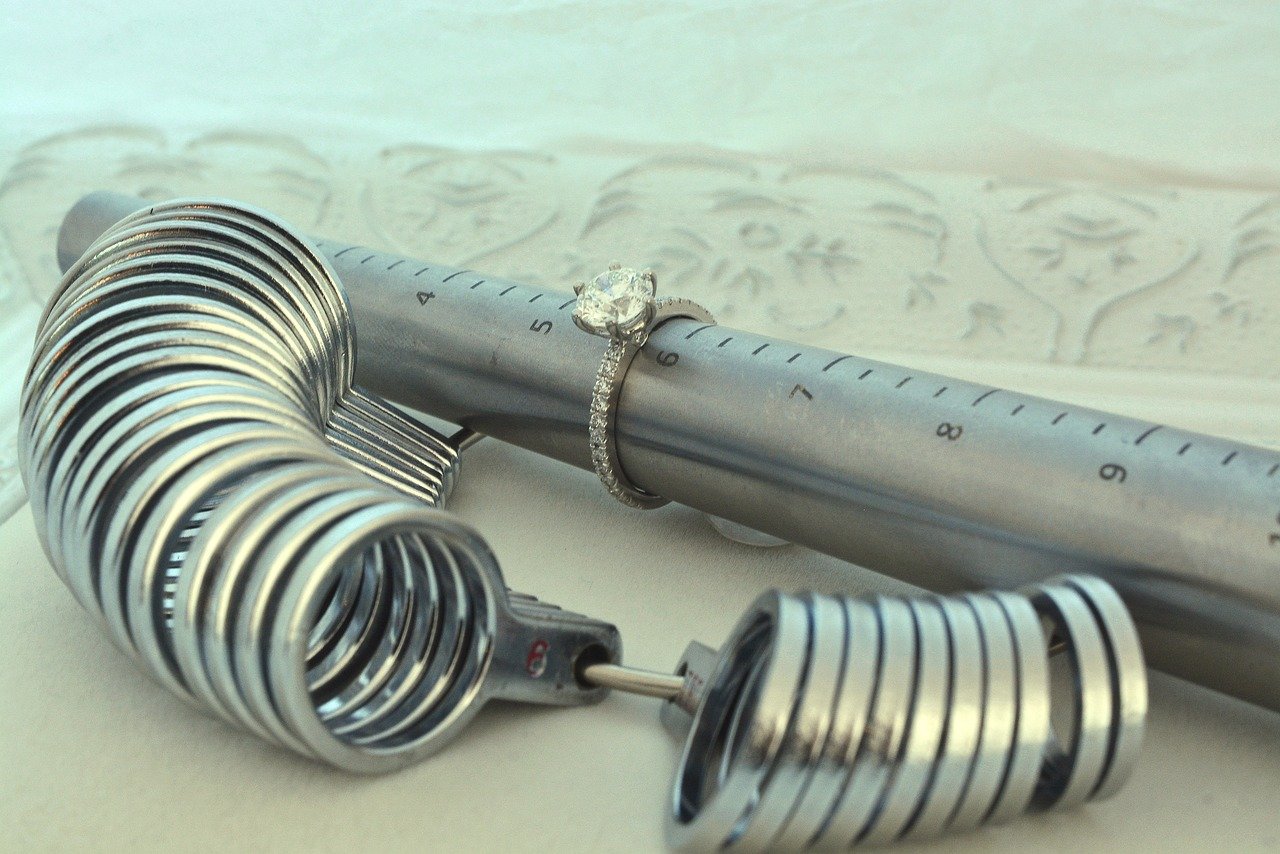Welcome to a helpful guide on bringing life back to your damaged bracelets! Whether your favorite bracelet has a broken clasp, missing beads, or tarnished metal, there are easy and affordable ways to repair and restore it to its former glory. From basic repairs you can do at home to professional restoration services, this article will provide you with all the information you need to give your beloved bracelets a new lease on life. Say goodbye to a drawer full of broken jewelry and hello to beautifully restored bracelets that you can enjoy wearing again. Have you ever found a beloved bracelet that you haven’t worn in ages because it’s broken or damaged? Maybe it has sentimental value or is a piece you absolutely love, but you just can’t bear to part with it. Well, fear not! In this article, I will guide you through the process of repairing and restoring damaged bracelets so you can bring them back to life and wear them proudly once again. You’ll be amazed at how a little TLC can transform your favorite wrist accessory into a stunning piece of jewelry that you can enjoy for years to come.

This image is property of pixabay.com.
Assess the Damage and Determine the Repair Needed
Before you can begin repairing your damaged bracelet, it’s important to assess the extent of the damage and determine what type of repair is needed. Look closely at the bracelet and identify any broken links, missing clasps, tarnished metal, or loose stones. Once you have a clear understanding of the damage, you can decide whether you can repair it yourself or if you need to seek professional help.
Assessing the damage and determining the necessary repairs is the first step in bringing your damaged bracelet back to life. By carefully examining the bracelet and identifying the areas that need attention, you can create a plan of action to restore it to its former glory.
Identifying Broken Links and Missing Parts
If your bracelet has broken links or missing parts, you will need to repair or replace them in order to restore its integrity. Depending on the type of bracelet, you may need to solder broken links back together, add new links, or replace missing clasps. For bracelets with intricate designs or unique components, you may need to consult a professional jeweler for assistance.
Identifying broken links and missing parts is crucial in the repair process, as these are often the most visible signs of damage. By addressing these issues first, you can ensure that your bracelet is structurally sound and ready for further restoration.
Dealing with Tarnished Metal and Loose Stones
If your bracelet is made of metal, such as sterling silver or gold, it may become tarnished over time. Tarnish can dull the shine of your bracelet and make it look worn and aged. To remove tarnish, you can use a jewelry cleaner specifically designed for the type of metal your bracelet is made from. For bracelets with gemstones, check for loose stones and secure them back in place with jewelry glue or prongs.
Dealing with tarnished metal and loose stones is a common issue with damaged bracelets, but it can be easily remedied with the right tools and techniques. By cleaning and polishing the metal and securing loose stones, you can instantly improve the appearance of your bracelet and make it look like new again.
DIY Repair Techniques for Simple Bracelet Repairs
If your damaged bracelet has minor issues that you feel confident in repairing yourself, there are several DIY techniques you can try at home. From fixing broken links to reattaching clasps, these simple repairs can be done with basic tools and supplies.
Attempting DIY repair techniques for simple bracelet repairs can be a cost-effective and rewarding way to restore your damaged jewelry. With a little patience and practice, you can master these techniques and confidently repair your bracelets with ease.
Fixing Broken Links
One common issue with bracelets is broken links, which can cause the bracelet to become unwearable. To fix broken links, you will need a pair of pliers, a jump ring, and a lobster clasp. Begin by opening the jump ring with the pliers, then attach the broken ends of the link to the jump ring and close it securely. Finally, attach the lobster clasp to the jump ring to complete the repair.
Fixing broken links is a simple DIY repair technique that can help restore the functionality of your bracelet. By following these steps and using the right tools, you can effectively repair broken links and make your bracelet wearable again.
Reattaching Clasps
If your bracelet has a broken or missing clasp, you can easily reattach a new one using a few simple tools. Start by removing any remaining pieces of the old clasp and cleaning the ends of the bracelet. Then, attach the new clasp to the bracelet using jump rings or jewelry glue, ensuring that it is securely fastened. Test the clasp to make sure it opens and closes smoothly before wearing your bracelet.
Reattaching clasps is a straightforward DIY repair that can save you time and money. With the right tools and techniques, you can quickly replace a broken clasp and make your bracelet wearable once again.
Securing Loose Stones
For bracelets with gemstones, it’s common for stones to become loose over time due to wear and tear. To secure loose stones, you will need jewelry glue, a toothpick, and a clean cloth. Apply a small amount of jewelry glue to the base of the loose stone using the toothpick, then press the stone firmly into place. Wipe away any excess glue with a clean cloth and allow it to dry completely before wearing your bracelet.
Securing loose stones is a delicate DIY repair that requires patience and precision. By carefully following these steps and using the right tools, you can secure loose stones and prevent them from falling out in the future.
Professional Repair Services for Complex Bracelet Restorations
If your damaged bracelet requires more extensive repairs or specialized techniques, it may be best to seek the help of a professional jeweler. Professional repair services can offer expertise, tools, and resources that are beyond the scope of DIY repairs, ensuring that your bracelet is restored to its original beauty.
Opting for professional repair services for complex bracelet restorations can save you time and frustration, as these experts have the skills and experience necessary to tackle even the most challenging repairs. By entrusting your damaged bracelet to a professional jeweler, you can rest assured that it will be repaired with precision and care.
Soldering Broken Links
For bracelets with intricate designs or delicate components, soldering broken links may be necessary to ensure a seamless repair. Professional jewelers have the expertise and equipment to solder metal links back together without damaging the surrounding elements. This technique requires precision and skill to achieve a strong and durable bond.
Soldering broken links is a complex repair that should only be done by experienced professionals. By entrusting your bracelet to a skilled jeweler, you can ensure that it is repaired with the utmost care and attention to detail.
Replacing Missing Stones
If your bracelet has missing gemstones or precious stones, a professional jeweler can help you source and replace them with high-quality alternatives. From diamonds to sapphires, professional repair services can match the color, cut, and clarity of the missing stones to seamlessly blend with the existing ones. This meticulous process requires specialized tools and expertise to achieve a flawless result.
Replacing missing stones is a delicate and intricate repair that should be left to professional jewelers. By choosing a reputable jeweler with experience in stone replacement, you can trust that your bracelet will be restored to its original beauty with precision and care.
Restoring Vintage Bracelets
Vintage bracelets, especially heirloom pieces, require special care and attention when it comes to repairs and restorations. Professional jewelers who specialize in restoring vintage jewelry can assess the condition of the bracelet, identify any potential risks, and create a customized repair plan that preserves its original beauty and value. From cleaning and polishing to repairing intricate designs, these experts can bring new life to vintage bracelets while maintaining their unique charm.
Restoring vintage bracelets is a nuanced process that requires a deep understanding of historical jewelry-making techniques and materials. By working with professional jewelers who have a passion for vintage jewelry, you can ensure that your cherished bracelet is repaired and restored with authenticity and respect for its heritage.
Maintenance Tips to Keep Your Bracelets Looking Beautiful
Once you have repaired and restored your damaged bracelet, it’s important to take proper care of it to ensure it stays looking beautiful for years to come. By following these maintenance tips, you can protect your bracelet from wear and tear and maintain its shine and luster.
Taking proper care of your bracelets is essential in preserving their beauty and longevity. By following these maintenance tips and incorporating them into your jewelry care routine, you can enjoy your bracelets for years to come.
Clean Your Bracelets Regularly
To prevent tarnish and dirt buildup, it’s important to clean your bracelets regularly using a mild jewelry cleaner and a soft cloth. Gently wipe down the bracelet to remove any dirt or grime, then rinse it with water and pat it dry with a clean cloth. Avoid using harsh chemicals or abrasive materials that can damage the metal or stones.
Regular cleaning is key to maintaining the appearance of your bracelets and preventing damage from dirt and oils. By incorporating cleaning into your jewelry care routine, you can keep your bracelets looking shiny and new for longer.
Store Your Bracelets Properly
When not wearing your bracelets, it’s essential to store them properly to prevent scratching, tangling, or other damage. Keep your bracelets in a jewelry box or pouch with individual compartments to avoid them rubbing against each other. Store them away from direct sunlight, heat, and moisture to protect them from discoloration and deterioration.
Proper storage is crucial in preserving the integrity of your bracelets and preventing damage from external factors. By storing your bracelets in a safe and organized manner, you can prolong their lifespan and maintain their beauty for years to come.
Inspect Your Bracelets Regularly
To catch any signs of damage or wear early on, it’s important to inspect your bracelets regularly for loose stones, broken links, or other issues. Check the clasps, links, and stones for any signs of damage, and address them promptly to prevent further issues. If you notice any issues that you can’t repair yourself, take your bracelet to a professional jeweler for assessment and repair.
Regular inspections help you identify and address potential issues before they escalate into major damage. By being proactive in caring for your bracelets, you can preserve their beauty and extend their lifespan for years to come.
Conclusion
Repairing and restoring damaged bracelets is a rewarding process that allows you to breathe new life into your beloved jewelry pieces. Whether you opt for DIY techniques or seek the help of professional repair services, the key is to assess the damage, determine the necessary repairs, and take proactive steps to bring your bracelets back to their former glory.
By following the tips and techniques outlined in this article, you can repair broken links, reattach clasps, secure loose stones, and restore vintage bracelets with confidence and care. With proper maintenance and care, your bracelets can continue to bring joy and beauty to your life for years to come.
So, next time you come across a damaged bracelet that holds sentimental value or simply sparks joy, don’t discard it – bring it back to life with a little TLC and see it shine once again on your wrist. Your repaired and restored bracelet will not only look beautiful but also hold a special place in your heart for the memories and moments it represents.
